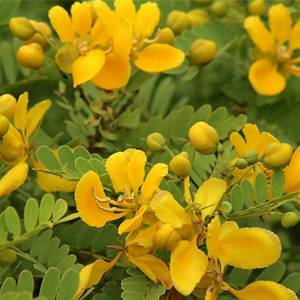Industrial Supply and Potential Health Benefits
Gymnema sylvestre, also known as gurmar in India, is a climbing vine native to the tropical forests of India, Africa, and Australia. Its leaves have been used for centuries in traditional Ayurvedic medicine for various health purposes.
Here’s a breakdown of gymnema sylvestre leaves for industrial supply and their potential health benefits:
Industrial Supply:
Gymnema sylvestre leaves are a valuable source of gymnemic acids, which have unique properties relevant to various industries:
Food and Beverage Industry: Gymnemic acids can suppress the perception of sweetness on the tongue. This makes them ideal for use in:
Sugar reduction in processed foods and beverages
Sweetener alternatives for diabetics and weight management products
Flavor modification and taste masking
Pharmaceutical Industry: Gymnema sylvestre extracts are being studied for their potential role in:
Management of type 2 diabetes by regulating blood sugar levels
Weight loss support through appetite control
Benefits of Gymnema Leaves:
While further scientific research is necessary, gymnema sylvestre leaves have been associated with the following potential health benefits:
Blood Sugar Management: Gymnemic acids may help reduce sugar absorption in the gut and stimulate insulin production, potentially aiding blood sugar control.
Weight Management: Gymnema leaves may promote satiety and reduce sugar cravings, potentially supporting weight management efforts.
Other Potential Benefits: Studies suggest gymnema might also play a role in:
Reducing inflammation
Improving cholesterol levels
Supporting eye health
Certificate of Analysis:When sourcing gymnema sylvestre leaves for industrial applications, it’s crucial to obtain a certificate of analysis (COA) from the supplier. This document verifies the quality and purity of the leaves, ensuring they meet industry standards and safety requirements.
Here are some key components typically included in a COA for gymnema sylvestre leaves:
Botanical name: Gymnema sylvestre
Plant part: Leaves
Origin: Source location of the leaves
Organoleptic properties: Description of the leaves’ appearance, color, and aroma
Physico-chemical properties: Moisture content, ash content, and other relevant parameters
Microbial analysis: Absence of harmful microorganisms like E. coli and Salmonella
Heavy metal analysis: Levels of lead, arsenic, and other heavy metals within safe limits
Pesticide residue analysis: Confirmation that pesticide residues are within acceptable levels











Reviews
There are no reviews yet.